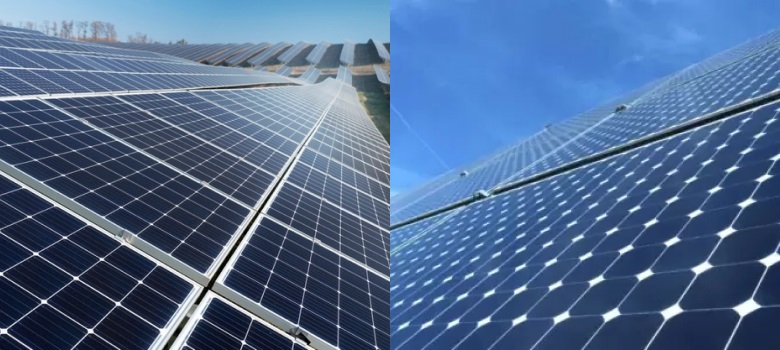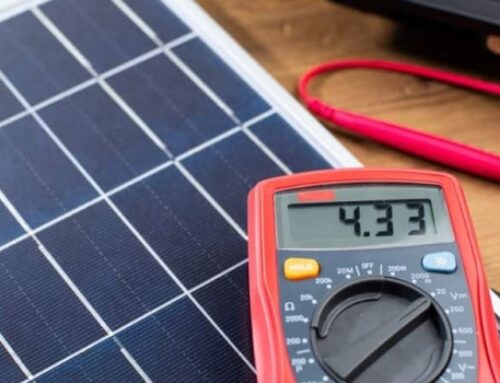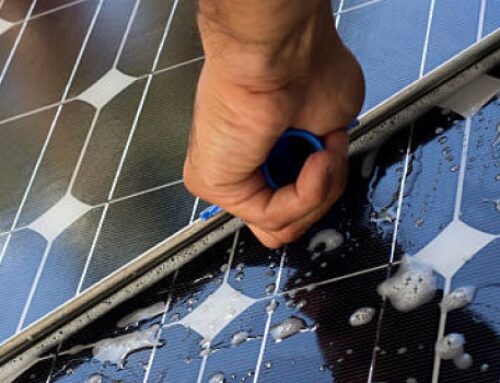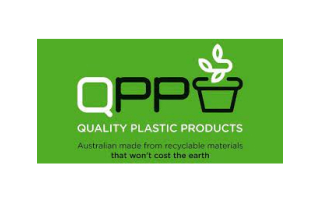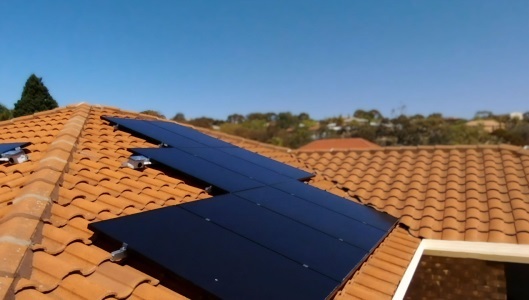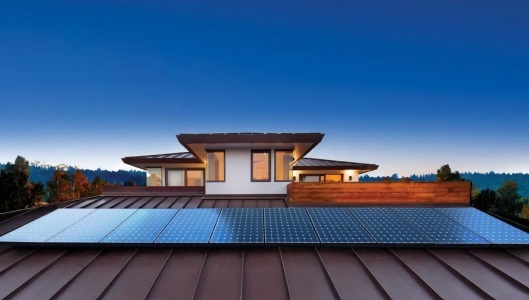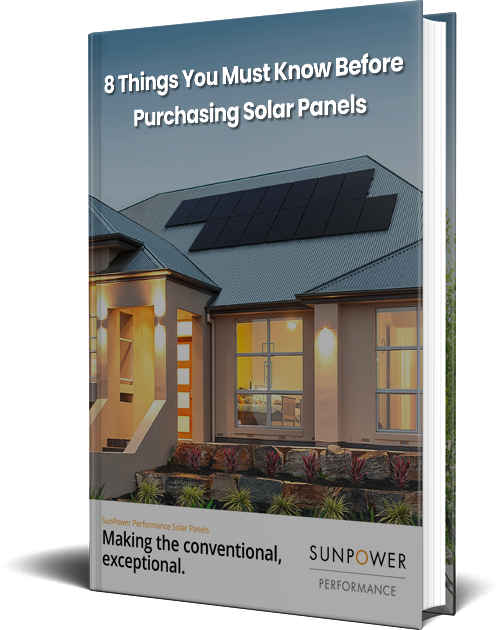If your home uses solar power, or you’re considering making the switch, chances are you’ve run into a wall of jargon or a bunch of buzzwords already.
There’s no doubting that solar energy can offer a sustainable alternative to the grid and may help lower your energy bills too.
But it can also be a little complex.
Before you can install solar panels on your Adelaide home, you’ll need to make sense of one of the most common terms you’ll come across are monocrystalline and polycrystalline.
In this article, we’ll explore the differences between the two technologies to help you make an informed decision for your Adelaide home.
Ready to level up your knowledge? Let’s get right into it.
Monocrystalline vs Polycrystalline Solar Panels: The Basics
Before diving into the comparison, let’s briefly understand the basic differences between monocrystalline vs polycrystalline solar panels.
| Monocrystalline Solar Panels: These panels are made from single-crystal silicon, which is formed into cylindrical ingots and then sliced into thin wafers. The uniformity of the crystal structure gives them a distinct black appearance. | Polycrystalline Panels: These panels are made from multiple silicon crystals, poured into a square mould, and then cut into wafers. They have a bluish hue due to the random arrangement of crystals. |
Efficiency and Performance
Monocrystalline panels have traditionally been more efficient than their polycrystalline counterparts. The single-crystal structure in monocrystalline panels allows them to convert sunlight into electricity more effectively, making them a great option for homes with limited roof space.
However, it’s important to note that advancements in technology have narrowed the efficiency gap between the two types of panels over the years. Modern polycrystalline panels now offer decent efficiency levels, and in some cases, they might even be a more cost-effective solution for larger solar system installations.
Space and Aesthetics
Monocrystalline panels are known for their higher power output per square metre compared to polycrystalline panels. This means that if you have limited roof space but want to generate maximum power, monocrystalline panels might be the way to go.
Additionally, some homeowners prioritise the aesthetics of their solar installations. Monocrystalline panels are often preferred for their sleek and uniform appearance, blending well with most roof designs. On the other hand, polycrystalline panels’ blue colour might not be as visually appealing to some individuals.
Temperature Tolerance
Monocrystalline panels tend to have slightly better temperature tolerance than polycrystalline panels. This means that in extremely hot conditions, monocrystalline panels might retain their efficiency better, leading to a slightly higher power output.
However, it’s worth mentioning that the temperature difference between the two types of panels is usually not substantial enough to be the sole determining factor when choosing solar panels for your home.
Durability and Longevity
Both monocrystalline and polycrystalline panels are durable and built to withstand various weather conditions, including rain and hail. They often come with warranties that guarantee a certain level of performance for 20 to 25 years. When well-maintained, solar panels can last even longer.
Price Considerations
The cost can play a significant role in the decision-making process for homeowners. Historically, monocrystalline panels have been more expensive than polycrystalline panels. However, the price gap has been closing over the years, and it’s essential to consider the specific brands, models, and installation costs when comparing prices.
Environmental Impact
Both monocrystalline and polycrystalline panels have relatively low carbon footprints compared to conventional fossil fuel-based energy sources. The manufacturing process for both types of panels involves the use of silicon, which is abundant and readily available in nature.
However, it’s worth noting that the production of monocrystalline panels typically requires higher energy consumption due to the precision involved in creating single-crystal silicon wafers. On the other hand, the production process for polycrystalline panels is less energy-intensive, but it generates a slightly higher amount of waste during manufacturing.
When it comes to recycling, both types can be recycled to recover valuable materials, like silicon and metals. The recycling process helps to reduce the environmental impact further and promotes a circular economy.
Performance in Low Light Conditions
In Adelaide, the weather can be unpredictable, with occasional overcast days. It’s essential to consider how well your chosen solar panels perform in low-light conditions. Monocrystalline panels generally have a slight advantage in low-light situations, as their single-crystal structure allows them to capture and convert sunlight more efficiently.
However, the difference in performance between the two types of panels is often minimal and may not significantly impact your overall energy production, especially when you have a well-designed solar system and optimal placement on your rooftop.
Temperature Coefficient
Another aspect to consider is the temperature coefficient of solar panels, which determines how much their efficiency decreases as the temperature rises. The temperature coefficient is measured in percentage points per degree Celsius. Monocrystalline panels usually have a lower temperature coefficient compared to polycrystalline panels, which means they are affected less by temperature increases.
On extremely hot days, monocrystalline panels may outperform polycrystalline panels due to this factor. However, it’s essential to remember that panels are rated at standard test conditions (STC), which assume a specific temperature. In real-world scenarios, both types of panels can perform well, and the difference in efficiency due to temperature is often minimal.
Installation and Maintenance
When it comes to solar panel installation and maintenance, both monocrystalline and polycrystalline panels are relatively straightforward. Reputable solar panel installers in Adelaide have experience with both types of panels, so the installation process should not be a deciding factor.
As for maintenance, solar panels are designed to be low-maintenance. Regular cleaning to remove dust and debris is essential to ensure optimal performance. Rainwater often helps to keep the panels relatively clean, but occasionally, manual cleaning might be necessary. Cleaning requirements are similar for both types of panels.
Incentives and Rebates
In Adelaide and across Australia, various government incentives and rebates are available to encourage homeowners to switch to solar energy. These incentives can significantly offset the upfront cost of installing panels. The availability and amount of incentives may vary depending on the state and federal policies.
Regardless of the type of solar panels you choose, you may still be eligible for these incentives and rebates. It’s crucial to research the current government programs and consult with a solar expert to understand the potential savings you can receive.
Monocrystalline or Polycrystalline: What’s Right For You?
The choice between monocrystalline vs polycrystalline solar panels comes down to your specific needs and preferences.
While monocrystalline panels tend to be slightly more efficient and visually appealing, polycrystalline panels can offer a cost-effective solution for larger installations. Consider your specific energy needs, budget, available roof space, and personal preferences when making your decision.
Here’s a simple takeaway:
- If you prioritise higher efficiency and have limited roof space, monocrystalline panels might be the better option.
- If cost-effectiveness and a larger installation area are crucial factors, polycrystalline panels could be a suitable choice.
Both types of panels have their advantages and are reliable sources of renewable energy. Whichever option you choose, you’ll be contributing to a cleaner environment and reducing your carbon footprint.
Need more help making your choice? Speak to a member of the Energy Buster team on (08) 7120 6377 today.

